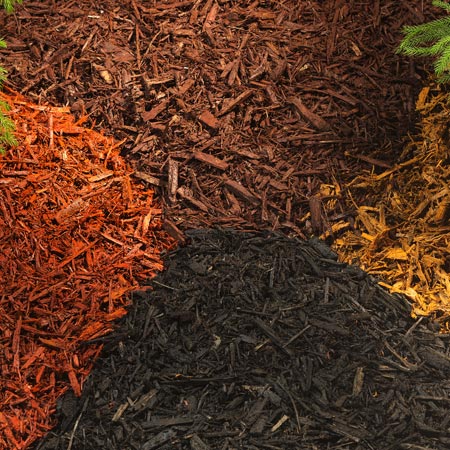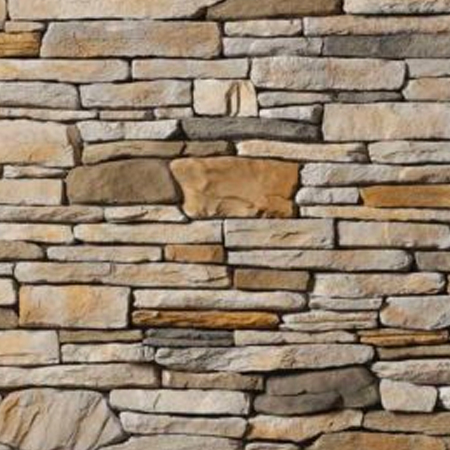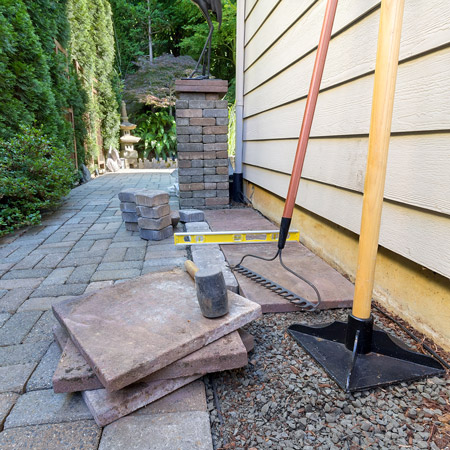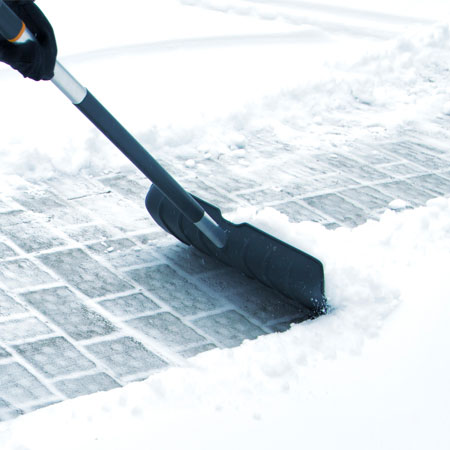
For the average homeowner who has a little bit of experience working with natural stone products, it will take approximately two days to build a ten-foot long dry stack retaining wall. Check with local codes before you start digging or installing any type of wall, just in case you need a permit. However, most structures that are three feet high or less won’t require anything official. Still, it’s a good idea to check before you buy supplies and learn how to build a retaining wall with these tips.
Why Choose to Make a Dry Stack Retaining Wall
There are a couple of benefits associated with choosing to learn how to build a retaining wall using stack stone in Brockton in the dry stack retaining wall method. Of all the other retaining wall ideas, this particular method allows for a built-in drainage system, which can be beneficial in areas like Southeastern Massachusetts where the weather is frequently wet. Another benefit is that if damage does occur due to water pressure or weather in-general, repairs can be easily made to a dry stack retaining wall that won’t require a lot of your time.
Another benefit to using the dry stack retaining wall ideas for your project is that this type of wall doesn’t require you to dig down to create a footing beneath the frost line. Other types of stone and mortar retaining walls will require this to be done. All you need to do is to create a solid foundation in which to start creating your wall using stack stone in Brockton and you’re on your way to building a beautiful retaining wall that will help you stop soil erosion, provide shelter for your plants in high winds and add a gorgeous accent to your landscaping.
How to Build a Retaining Wall
After you have checked with local regulations to ensure that you don’t need a permit for your dry stack retaining wall, it’s time to get started. Visit J&J Materials for all of your natural stone supplies and materials. Choose stones that have at least two sides that are flat, as one will be the bottom and the other will be the top. Heavy stones are preferred, as they will provide more stability for the retaining wall. Begin by plotting out where the retaining wall will sit and use stakes and string to ensure a straight wall, as well as to ensure that your retaining wall will be level all the way across.
A small trench must be dug, between eight and ten inches deep to fully submerge the first layer or stone. When using stack stone in Brockton, MA or anywhere else in the surrounding area, this method will help your dry stack retaining wall to withstand all of the pressure that will be upon it in holding the slope of soil back from coming loose. Keep the base of the soil packed as tightly as possible so the wall won’t shift as it settles. The width of the trench that you are digging should be calculated based upon the height of the wall. The formula is that the base of the structure should be half the height of the wall, meaning that a three-foot retaining wall should have a base that is 18-inches wide. The trench should also incline back slightly into the slope that it will lean into, approximately two inches for every foot of height in the wall as a whole, meaning a six-inch slope in total for a three-foot wall.
Begin laying the dry stack retaining wall in a horizontal row, putting the largest, heaviest, flattest and most stable stones at the bottom. Think about the whole thing as a puzzle and take your time as you place and stack them together. You can either create uniform rows, choosing stones that are the same height for each row you stack or make a more random type of wall that uses smaller, filler stones to make up for height differences. With these retaining wall ideas, you may start out doing uniform rows, but ultimately end up using filler stones. Either way, when you learn how to build a retaining wall you will quickly see that each wall is unique in its own way. No two are ever exactly alike.
Checking Your Work Using Stack Stone in Brockton
The next phase of the installation is to check to ensure that the stones run level from left to right. You should begin back-filling with a bit of excavated soil behind the leaning slope of your retaining wall to ensure that it is solid all the way up. You can also fill in that area with any stones that are too small to use in the actual wall, just make sure to tamp it down as you go for better stability. Continue adding layers of stack stone and back-filling it again after each layer. Check to ensure that there is as little amount of wiggling in your wall as you go higher and higher. You can add small, really flat rocks or tuck soil into areas where there is a little wiggle room to counteract this behavior.
About half way up your dry stack retaining wall, you will want to add what are known as “deadmen” stack stones. These stones are not placed parallel to the other stones in your wall, but are placed across and into the soil that is behind the retaining wall to provide extra stability. What this does is to tie the structure into the slope that is behind it. Do this by digging a small hole into the slope for the deadman stone. Push the stone into the hole until the end of it is flush with the rest of your wall. Long stones will provide more stability. Expert wall builders require one deadman for every sixteen square feet of exposed wall face.
Placing the Capstones for Your Dry Stack Retaining Wall
Once you reach the height you want for your retaining wall, its time to place what are known as the “capstones,” which will be similar in weight and style to the first stones you placed in your wall. They should be flat on two sides and have a significant amount of mass to help keep the stones underneath in place and to add a finished look to your dry stack retaining wall. If you have any questions about choosing the best type of natural stone when you are learning how to build a retaining wall for the first time, speak with the friendly and helpful customer service agents at J&J Materials. We can deliver your materials anywhere in Southeastern Massachusetts and Rhode Island. Give J&J Materials a call today to find out more about our natural stone, masonry and landscaping products and materials.






